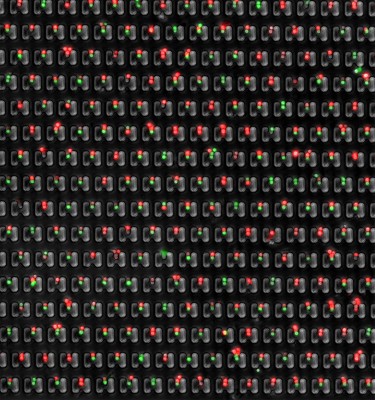
The adage “an apple a day keeps the doctor away” is a familiar one. “Vitamin C supports the immune system and how immune cells interact” is less familiar, but nearly as important, according to new research from researchers at the Massachusetts Institute of Technology.
In a paper published in the Jan. 13 issue of Nature Communications, MIT researchers detail a new microfluidic device, which allows for precise manipulations of tiny volumes of fluid to explore immune cell interaction.
“Basically, in the immune system, cells are constantly forming contacts, either with one another or the foreign agents that invade the body,” said Burak Dura, the paper’s lead author and a graduate student at MIT’s Department of Electrical Engineering and Computer Science.
These interacting cells play a vital role in the functioning of the immune system. When a person gets sick, the outcome is ultimately determined by the communication between immune cells. As a virus or infection attacks the body, immune cells go through a series of interactions as they determine how the cells will respond to the attack. The specifics of this process, however, have remained unclear.
“Cell interactions are generally studied in conventional culture dishes or test tubes by mixing the cell populations of interest and then imaging their responses,” Dura said.
While this previous method verifies that the cells function by communicating with each other, it gives no insight to the particulars of how they do it, or for how long. The research, conducted by Dura and Joel Voldman, the MIT EECS professor who developed the technology, enables a closer look at immune cell interaction.
“Bulk assays to assess communications [between immune cells] cannot resolve the details of these interactions since they are obscured within the mixture of cells,” said Dr. J. Christopher Love, associate professor of chemical engineering at MIT. “Microfluidic tools like the elegant one demonstrated by the Voldman Lab provide one way to overcome this limitation.”
Dura said the microfluidic platform the researchers developed addresses these limitations.
“Using a cell trap array and a four-step cell loading procedure, we can generate hundreds of cell pairs, making sure that each cell type A is contacting only one cell type B,” Dura said.
In other words, researchers can use the device to isolate immune cell pairs and examine specific cell-to-cell interactions. Andre Sharon, professor of mechanical engineering at Boston University and director of BU’s Fraunhofer Center for Manufacturing Innovation, said the microfluidics behind the device are part of an interdisciplinary field in which fluids are handled and manipulated on a microscopic scale.
“A key aspect of microfluidics’ work is that fluids behave differently at the micro scale than they do at the macro scale, because surface tension and fluidic resistance begin to dominate the system,” Sharon said. “Researchers have been exploiting these fluidic properties to conduct science that cannot easily be done otherwise. This includes the ability to capture, manipulate and monitor individual cells.”
With the application of current microfluidic technology, the Voldman Lab is now able to examine immune cells one by one. With that comes a large impact on research of a huge range of illnesses.
“Our device could be used to study immune cell interactions in a controllable manner, and thus enable us to gain a mechanistic insight into cell decision-making process,” Dura said. “The insight gained from such experiments in the context of cancer, infection and autoimmunity should be helpful for devising new therapeutic approaches for future.”














